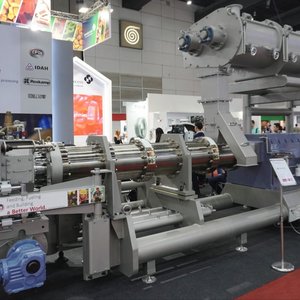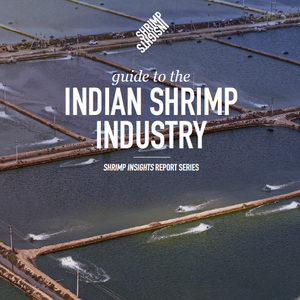Revolutionary solvent-free extraction process for krill oil
Tharos Ltd has recently filed what it expects to be a new and revolutionary way to extract the highest possible quality krill oils. The patented process will significantly reduce production costs and its price to end consumers. Whether the processing takes place within krill’s low-fat capture season or high-fat (or fatty) capture season, the resulting end products are of the highest quality in terms of Omega-3s, phospholipids and natural antioxidant content.
By contrast, all actual fishing operations that target krill oil extraction, generally use solvent extraction procedures and are limited to operating at specific parts of each season in order to obtain a raw material to later extract krill oils.
How it works
The invention discloses a no-solvent (nor chemicals) extraction principle used to extract the oil. This new process obtains simultaneously phospholipids and neutral lipids enriched krill oils containing DHA and EPA poly-unsaturated fatty acids and astaxanthin. This invention provides two distinctive and selective krill oils and also discloses a krill meal obtained by this modified process that contains low fat content, in all cases these products are used as health products for human application.
Why it was developed
All relevant current krill oil extraction methodologies generally use chemicals to extract the oil, which could leave residues on the resulting end product. There are some other companies that also offer krill oil but have not yet disclosed their extraction procedure from which to check their product integrity - suggesting either they infringe existing patents or the resulting end-product is not pure krill oil but rather a mix of several oils, be them marine origin or not. Until such other krill oil offers disclose their production principles, they cannot be properly scrutinized affecting in the long-term end-consumers confidence on it.
Who did it?
By Tharos Ltd inventors Mr. Dimitri Sclabos, Mr. Raul Toro and Dr Mario Chiong. Tharos is a consulting company with more than 20 exclusive years work on South Antarctic krill fishery. Tharos holds many awards, publications, conference speeches, etc. Nutrition and health are Tharos’ primary business areas focused on animal, human and pharmaceutical products. Tharos works either as consultants, foreign company representations, quality program developers, brokers and/or distributors. Primarily associated with marine and seafood projects that require extensive operational and market analyses as well as superb sales practices – using the experience gained in successful projects around the world including Corporation in Japan, USA, Chile, Russia, Ukraine and Norway, among others.
When it will be released
Tharos has just applied for its patent application and will follow all PCT regulations on this matter.
An environment-driven invention
This invention is a powerful krill-related environment-driven patent as among its direct benefits, it includes:
a) A lower catch-volume requirement to secure the same amount of end product compared to other methods, as there is a higher processing-yield, which allows less captured tonnage per end-product-tonnage output;
b) A significant reduction on processing infrastructure in relation to any other comparable processing method as the amount of catch and equivalent processing capacity is diminished due to higher processing yields;
c) A relevant improvement of the end-product quality in terms of freshness and its molecules quality. The patent avoids phospholipids’ decomposition and/or lipids deterioration during processing and transportation
d) This invention secures lower fishing and processing costs that goes in direct benefit of end-users through a lower end-product selling price. This means that the benefit to the end-user, be it for human health or animal nutrition, will be through the reduction of the market-cost per equivalent high-quality molecule;
e) This invention will also provide a further resource protection as the catch effort will not be focused on a limited catch and processing period rather spread-out the entire krill fishing season.











